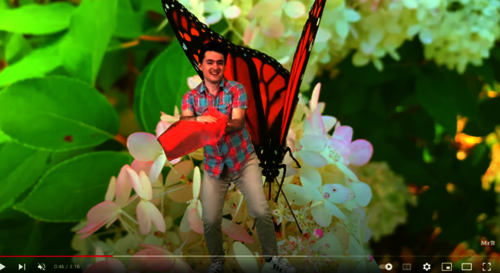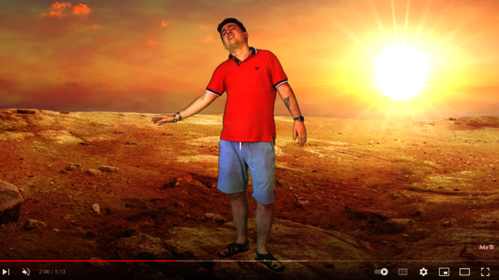Education Through Music: Teaching Music to Students with Severe Autism Spectrum Disorder in Public Elementary Schools (Part 2)
By Aygul Hecht, Ph.D.
This issue of NASET’s Autism Spectrum Disorder Series was written by Aygul Hecht, Ph.D. It is the second part of her article that focuses on education through music and students with autism spectrum disorder. Trying to bring the same techniques and methodologies that she used in her general education classes, she finally realized that the “general music class” techniques and methods were ineffective in the classes with ASD students. Therefore, Dr. Hect developed new methods and methodology to meet her ASD students’ needs. In this article, Dr. Hecht briefly describe only one aspect of her lesson plans, students’ emotional response to music.
Abstract
When I began teaching students with severe autism spectrum disorder (ASD) in one of the public schools in CA, I was challenged by my students’ disinterest and passive participation in music. Trying to bring the same techniques and methodologies that I used in my general education classes, I finally realized that the “general music class” techniques and methods were ineffective in the classes with ASD students. Therefore, I developed new methods and methodology to meet my ASD students’ needs. In this article, I briefly describe only one aspect of my lesson plans: students’ emotional response to music.
“While ASD is a complex condition with a wide range of symptoms, social interaction difficulties are a common hallmark. People with ASD often face challenges in various aspects of socialization, including making friends, interpreting social cues, and engaging in reciprocal conversations.” (Social Difficulties in Autism Spectrum Disorder, 2024) Having a goal to help my students to transition to adulthood without any stress or frustration, I made all efforts to ignite my students with music and activate their “sad” and “happy” emotions. The emotional aspects of music can help students with ASD to develop social skills and equally participate in all social activities available for all the US citizens.
INTRODUCTION
When I began teaching music to students with severe forms of autism, I noticed that almost 65-70% of my students had problems in expressing their emotions, facial mimicking or body language; it drastically affected their participation in the class. I tried to change songs, I did different activities, yet for the 30-minutes of the class, a majority of my students kept withdrawing into themselves and showing no interest in the music.
My observation of students with severe autism spectrum disorder (ASD) brought me to the point where I decided to expand my methods of teaching with the more innovative techniques. I was not intending to do a scientific research or survey, I simply wanted to find a solution how to ignite my ASD students through the music. As an itinerant music teacher, I had been teaching for years the general education classes together with mainstreamed special education students. However, the Structured Autism Classes (SAC), K-3, was something new that I had to do at one of the largest public-school districts in Orange County, CA.
In the beginning of the school year, I introduced to my general education students Antonio Vivaldi’s “Four Seasons”. In preparation for the class, I chose one of the CA Arts Standards for Music that interpreted music as a cluster of emotions and creativity. The CA Department of Education guidance stated, “With limited guidance, demonstrate and discuss personal reasons for selecting musical ideas that represent expressive intent”. (Creating—Anchor Standard 2: Organize and Develop Artistic Ideas and Work, 2019) Interestingly, the keywords such as “musical ideas” and “expressive intent” repeated in each column of the guidance for each grade from PK-12. Moreover, CA Department of Education guidance illuminated the term of “expressive intent” as “The emotions, thoughts, and ideas that a performer or composer seeks to convey by manipulating the elements of music” (Music Glossary, 2019).
I chose 2 movements from Vivaldi’s “Four Seasons”: “Spring” and “Summer”. The chosen videos were not the plain “camerata” versions, but a series of choreographed movements articulated by Mr. R, the creator of these Youtube videos. The picturesque background and body movements depicted well the emotional context of the baroque music.
For example, Mr. R used a scarf to illustrate the blooming nature during the spring (https://www.youtube.com/watch?v=9-Cv_roRgMo); meanwhile, he used the desert background and a strong sun image to show the “heat” of the summer season (https://www.youtube.com/watch?v=guChkmvYe0o&t=6s).


Both videos together were about 8 minutes long. I played these videos one after another to my general education students and observed their emotions and attention. All my general education students were “absorbed” by these two music stories. After listening to music and watching “Spring” and “Summer” stories, the general education students actively participated in discussion and used the colloquium terms to compare and describe music in the first and the second movements of “Four Seasons”. For example, they used “Bright”, “Vivid”, “Blooming” terms for the “Spring Movement” and “Dramatic” and “Intense” for the “Summer Movement”. Also, all my general education students participated in mirroring the choreography of Mr. R.
Having had success and 100% emotional response from the general educational students to Vivaldi’s “Four Seasons”, I was eager to “shake emotionally” my “Structured Autism Class” (SAC) students as well. Yet, I failed.
None of my students, from the older or younger groups, showed any interest in choreography or music. I was puzzled. I was challenged. Then, I went back to the library and I read more books and articles about autistic children.
MUSIC AND EMOTIONS. TRACING THE GEOMETRICAL SHAPES.
The article “The Children with Autism ‘See’ This Optical Illusion in a Unique Way, Experiment Finds” that summarized Italian psychologist Gaetano Kanizsa’s and neuroscientist Emily Knight’s research about mental processes of autistic children helped me to get a clear picture on how to approach students with severe ASD and receive their emotional response to music.
Carly Cassella writes, “To transform reality into the mental landscape that occupies out minds, our brain performs a multitude of operations. Some are short-cuts; assumptions that become obvious the moment we attempt to make sense of the conflict presented in an optical illusion. For individuals with autism, those short-cuts and mental operations could work a little differently, subtly influencing how the brain constructs a picture of everyday life.” (CASSELLA, 2023).
By reading the article, I definitely understood that my ASD students process and construct a picture of everyday life differently than I or my general education students do. In her article Cassella states that the study conducted in 2018 revealed that children with ASD had difficulties seeing a moving object and seeing a color at the same time because their brain was focusing on either a color or a moving object, but not both. Besides, children with ASD struggled to understand the body language unless they paid a very close attention. According to Emily Knight, the brain of youngsters with ASD is measured in a very passive phase of perception of the body motions and thus, children with ASD have harder time to interpret other people’s emotions and body language.
My SAC students remained passive and unresponsive to “happy” or “dramatic story” delivered by Mr. R in the “Spring and Summer Movements” of Vivaldi’s “Four Seasons” because they could not process music and body movements at the same time. The neurological process of cognition of sound and visual data without an interception made impossible it for my SAC students to understand the emotional acting by Mr. R and at the same time perceive the language of music.
Om Patil and Meghali Kaple describe “Autism” as an “neurodevelopmental condition” with unusual sensory processing (Patil, Om and Kaple, Meghali, 2023). Scientists stated that people with ASD experience difficulties with communication and perceiving emotions within the social interaction.
Understanding emotions is fundamental in our everyday life. Setting a goal to help my SAC students to transition to adulthood and become independent citizens, I decided to re-do my lesson plan with the same CA content core standard “Expressive Intent of Music” yet to use different delivery techniques.
First, I decided to utilize music as a background. I have observed that my SAC students pay attention to animated characters of the songs (“Youtube” collection of children songs) more than they perceive the plain music with lyrics. The optical stimuli of ASD children activates one part of the brain to focus on the moving objects, and in this case, it is an animated character. However, other stimuli that helps to perceive sounds in harmony with the moving objects, remains sleepy. So, in my lesson plan I switched the roles of “moving objects” and music. I made the music to become #1 when I introduced to my students the “sounded shapes”.
One of my colleagues, the school psychologist, said one day that she used a technique that helped one of her IEP students to improve his behavior in the classroom. She asked this student to trace images in the coloring pages when this student was sent to her office due to his behavior. The student remained in her office until his “sloppy” tracing would turn into almost precise lining. Then, the student was dismissed to complete his classroom assignments without any interruptions.
Because the majority of my ASD students had a problem to recognize or feel, or express their emotions, tracing the shapes activity became the activity to stimulate “sad” and “happy” emotions within my students.
It is believed that ASD can overlap with symptoms of alexithymia. “Alexithymia is defined as the inability to recognize or identify your own emotions. Individuals who have alexithymia have in common the inability to either verbalize their emotions due to lack of awareness of the emotion, or possible confusion of emotional feelings” ( (Deolinda, 2023).
For the “Emotions and Tracing the Shapes” activity, I used the shapes puzzle and asked all my students to take out one shape, for example a circle, from the puzzle and trace its contours using a plain piece of paper and pencil.

While my students were tracing the shape, I played the recording of “happy” music, such as “Blue Danube” Waltz by J. Strauss, as a background music, and displayed the “Happy Face” emoji on the screen.

Then, with the second shape, for example, a triangle, I played the sad music recording of “The Swan” by Saint-Saens and the “Sad Face” emoji was displayed on the screen.

Both activities were no longer than 2.5 – 3 minutes (based on the time of the lesson plan). My students were able to trace and listen to music. In the end of the activity, I played the recording of the song, “If You’re Happy and You Know It” (https://www.youtube.com/watch?v=M6LoRZsHMSs&t=14s) and I re- enhanced the “happy” and “sad” emotions with the exaggerated facials mimics and body gestures when I sang the song without an accompaniment:
If You’re Happy and You Know It
Clap Your Hands
If You’re Sad and You Know It
Touch Your Nose.
Closer to the end of school year, I noticed that one of my nonverbal students, Joe, who kept withdrawing himself from any activities, suddenly began crying right after I played “The Swan” by Saint-Saens. At first, when the teachers’ aides and I noticed his tears on his cheeks, we thought he had some discomfort. Yet, Joe repeatedly kept crying every time after “The Swan” music had been played. Then, I puzzled out, in my opinion, the cause of Joe’s tears: through his tears he expressed his feeling about the music.
Another interesting fact was with Clayton. I noticed that every time when I sang the song “If You’re Happy and You Know It”, Clayton, the nonverbal student, grabbed a drum and played the instrument very loud, even though he remained passive for other activities in the class. In my opinion, through drumming, Clayton expressed his happy feelings.
How shapes, tracing and music helped my students
First, why shapes? The studies conducted at different universities worldwide revealed that shapes can induce emotional responses. For example, the study conducted at the University of Rennes in France unveiled that children with ASD responded to the geometrical shapes more emotionally with smiles and vocalization than “neurotypical children.” ( (Belin, Laurine, Henry, Laurence, Destays, Mélanie, Hausberger, Martine, and Grandgeorge, Marine, 2017). By seeking to develop the emotional responses to music through the geometrical shapes, I paid close attention at how my SAC students sensed the shapes in the puzzle. I noticed that the more they traced the shapes, the more they listened to the music. I may only predict that the visual stimuli together with tactile sense (touching the shape), and the fine motor skills (holding pencils and drawing the contours of the shape) activated another part of the brain – auditory sense. Interestingly, a similar concept of involving two or three stimuli to “wake” up the “sleepy” neuron was done by the scientist Ebrahimi.
In one study, Ebrahimi compared the effect of drawing and storytelling on sleep quality in children with autism. According to the results, she recommended that more interventions should be implemented, especially the use of painting and storytelling in children with autism because it is inexpensive, effective, and practical in treating sleep disorders
In one study, Ebrahimi compared the effect of drawing and storytelling on sleep quality in children with autism. According to the results, she recommended that more interventions should be implemented, especially the use of painting and storytelling in children with autism because it is inexpensive, effective, and practical in treating sleep
disorders
In one study, Ebrahimi compared the effect of drawing and storytelling on sleep quality in children with autism. According to the results, she recommended that more interventions should be implemented, especially the use of painting and storytelling in children with autism because it is inexpensive, effective, and practical in treating sleep disorders
In one study, Ebrahimi compared the effect of drawing and storytelling on sleep quality in children with autism. According to the results, she recommended that more interventions should be implemented, especially the use of painting and storytelling in children with autism because it is inexpensive, effective, and practical in treating sleep disorders
In one study, Ebrahimi compared the effect of drawing and storytelling on sleep quality in children with autism. According to the results, she recommended that more interventions should be implemented, especially the use of painting and storytelling in children with autism because it is inexpensive, effective, and practical in treating sleep disorders
“In one study, Ebrahimi compared the effect of drawing and storytelling on sleepy quality in children with autism. According to the result, she recommended that more interventions should be implemented, especially the use of painting and storytelling in children with autism because it is inexpensive, effective, and practical in treating sleep disorders.” ( (Ivanova, 2021).
By playing music as a background and letting my students focus on drawing and spotting the shapes, I hoped that eventually the activation of certain stimuli in neurological system, in this case the fine-motor stimuli, optical stimuli and tactile stimuli would wake up the audio stimuli to emotionally respond to the played music.
The response from Clayton and Joe showed that “background music can be an effective tool to increase emotional understanding in children with autism, which is crucial to their social interactions.” (Katagiri, 2009).
Conclusion
The music, shapes and tracing activity described in this article was not set up to test or record any research data. I simply wanted my students to develop the skills that could help them in their nearest future. For example, the emotional response to music might help my students to develop social skills and the recognition of shapes would develop spatial sense that can be practical if my students will seek a job in construction or in any furniture stores like Ikea to assemble parts of the furniture to earn money and claim their financial independency. This exercise showed that there are a lot of possibilities to help ASD students to gain the skills that they can use after graduation from the high school to become independent in their adulthood life.
References
Belin, Laurine, Henry, Laurence, Destays, Mélanie, Hausberger, Martine, and Grandgeorge3, Marine. (2017, January 30). Simple Shapes Elicit Different Emotional Responses in Children with Autism Spectrum Disorder and Neurotypical Children and Adults. doi:10.3389/fpsyg.2017.00091
CASSELLA, C. (2023, March 4). Children With Autism ‘See’ This Optical Illusion in a Unique Way, Experiment Finds. Retrieved from ScienceAlert.com: www.sciencealert.com/children-with-autism-see-this-optical-illusion-in-a-unique-way-experiment-finds
Creating—Anchor Standard 2: Organize and Develop Artistic Ideas and Work. (2019, January 9). Retrieved from California Department of Education: www.cde.ca.gov/be/st/ss/documents/caartsstandards.pdf
Deolinda, A. R. (2023, September 28). A World Without Emotions: Alexithymia and Autism. Retrieved from Autism Parenting Magazine: www.autismparentingmagazine.com/alexithymia-autism/
Ivanova, V. (2021, August). Specifics in Children’s Drawings with Autism. Journal of Intellectual Disability, 9(4), 368-373. doi:10.6000/2292-2598.2021.09.04.3
Katagiri, J. (2009). The effect of background music and song texts on the emotional understanding of children with autism. Music Therapy, 46(1), 15-31. doi:10.1093/jmt/46.1.15
Music Glossary. (2019, January 9). Retrieved from California Department of Education: www.cde.ca.gov/be/st/ss/documents/caartsstandards.pdf
Patil, Om and Kaple, Meghali. (2023, October 31). Sensory Processing Differences in Individuals With Autism Spectrum Disorder: A Narrative Review of Underlying Mechanisms and Sensory-Based Interventions. doi:10.7759/cureus.48020
Social Difficulties in Autism Spectrum Disorder. (2024, May 23). Retrieved from The University of Kansas: educationonline.ku.edu/community/social-difficulties-in-autism-spectrum-disorder
Acknowledgement
The author would like to thank Maria Pacino, Professor and Chair, Department of Library and Information Studies, at Azusa Pacific University, and Connie Prince at Los Angeles Public Library for their support and inspiration.
About the Author
Aygul Hecht is currently working as the public-school music teacher at Lancaster Unified School District and part-time librarian in one of the branches of Los Angeles Public Library. Aygul Hecht received her BS in Music from Almaty State Conservatory (Kazakhstan) and PhD in Philosophy and Music from Moscow State University, Russia.
To download a PDF file version of this issue of NASET’s Autism Spectrum Disorder Series: Click Here
To return to the main page for NASET’s Autism Spectrum Disorder Series – Click Here

